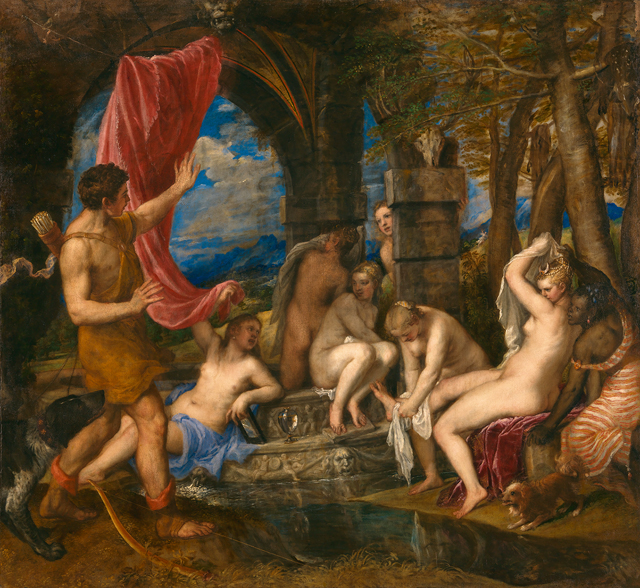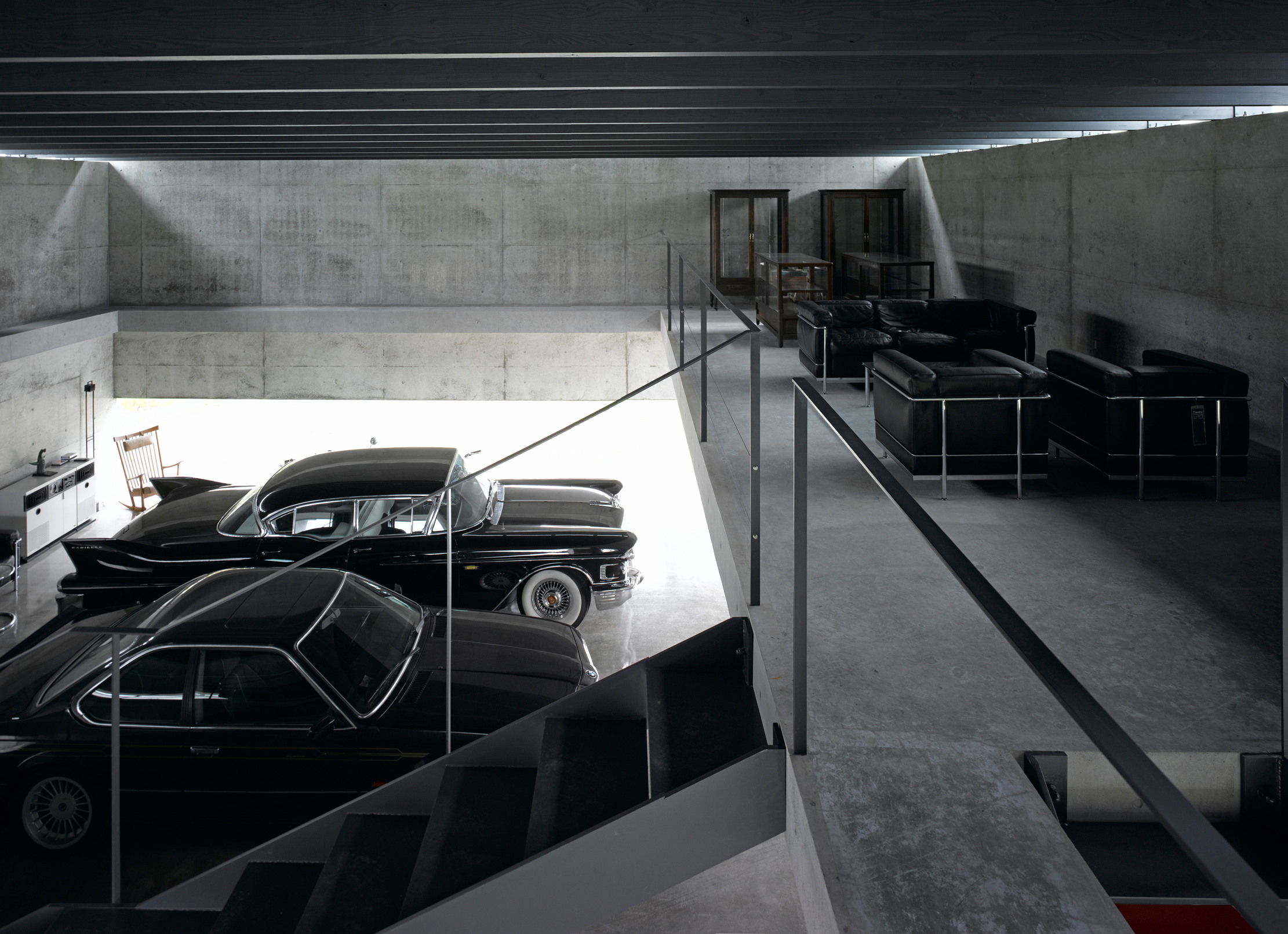My favourite painting: Hannah Rothschild
Hannah Rothschild chooses her favourite painting for Country Life.


Diana and Actaeon, by Titian (Tiziano Vecellio), 1488/90– 1576, 6ft by 6ft 7in, The National Gallery, London, and National Galleries of Scotland.
Hannah Rothschild says: This painting captures the moment when the hunter Actaeon accidentally disturbs the chaste goddess Diana and her nymphs bathing by a pool. In this single composition, Titian packs in as much drama as any full-length feature film. Dogs snarl, Actaeon recoils, women writhe, clouds scud and Diana spits. Actaeon’s grisly punishment is foretold by the stag’s skull and draped animal skins: moments later, Diana will turn him into a stag and he will be ripped to death by his own hounds. I love this painting's drama, pathos and beauty.
Hannah Rothschild is a writer and filmmaker. She took over the Chair of the National Gallery’s Board of Trustees on Monday. Her novel The Improbability of Love was published in May.
John McEwen comments: The Imperial Diest was the general assembly of the imperial estates of the Holy Roman Empire. Under the Emperor Charles V (1500–58), they took place at Bavarian Augsburg, Germany’s financial capital. In the 16th century, they were subject to the religious disputes of the early Reformation.
Titian seldom left Venice. Notable exceptions were when he was summoned to two Augsburg Diets, by Charles V in 1548 and, in 1550, by Charles’s son, the future Phillip II of Spain (1527–98). Both treated him with new respect for an artist. The story goes that, when painting the emperor’s portrait, Titian dropped his brush. The emperor picked it up and gave it back to him. ‘Sire, one of your servants does not deserve such an honour,’ said Titian. ‘Titian deserves to be served by Caesar,’ replied the emperor.
Charles needed art to give expression to his status as convention demanded, but Philip was an art lover and commissioned Titian to paint what he pleased. The result was seven scenes from Ovid’s Metamorphoses. This picture and a companion piece, Diana and Callisto, were subsequently in the Duke of Sutherland’s collection on loan to the National Gallery of Scotland. When the Duke recently put them up for sale, they were bought from the public purse. They are now shared between the National Galleries of Scotland and The National Gallery, London.
Lucian Freud considered them ‘the most beautiful pictures in the world’. he liked ‘the way that the more you look at them, the more dogs you seem to find’ and the curtain in this picture, ‘obviously done at the last minute out of pure joie de vivre’.
Sign up for the Country Life Newsletter
Exquisite houses, the beauty of Nature, and how to get the most from your life, straight to your inbox.
Country Life is unlike any other magazine: the only glossy weekly on the newsstand and the only magazine that has been guest-edited by HRH The King not once, but twice. It is a celebration of modern rural life and all its diverse joys and pleasures — that was first published in Queen Victoria's Diamond Jubilee year. Our eclectic mixture of witty and informative content — from the most up-to-date property news and commentary and a coveted glimpse inside some of the UK's best houses and gardens, to gardening, the arts and interior design, written by experts in their field — still cannot be found in print or online, anywhere else.
-
 Five beautiful homes, from a barn conversion to an island treasure, as seen in Country Life
Five beautiful homes, from a barn conversion to an island treasure, as seen in Country LifeOur pick of the best homes to come to the market via Country Life in recent days include a wonderful thatched home in Devon and a charming red-brick house with gardens that run down to the water's edge.
By Toby Keel Published
-
 Shark tanks, crocodile lagoons, laser defences, and a subterranean shooting gallery — nothing is impossible when making the ultimate garage
Shark tanks, crocodile lagoons, laser defences, and a subterranean shooting gallery — nothing is impossible when making the ultimate garageTo collectors, cars are more than just transport — they are works of art. And the buildings used to store them are starting to resemble galleries.
By Adam Hay-Nicholls Published
-
 My favourite painting: Allan Mallinson
My favourite painting: Allan MallinsonMilitary historian Allan Mallinson picks an image of 'faith, generosity and ultimate sacrifice'.
By Charlotte Mullins Published
-
 My Favourite Painting: Piet Oudolf
My Favourite Painting: Piet Oudolf'One cannot sense whether he is far out on the ocean or closer to shore, or what he may be watching or feeling in that moment as he stares towards the beach.’
By Country Life Published
-
 My Favourite Painting: Mary Plazas
My Favourite Painting: Mary Plazas'There is compassion, awe, humility, a knowing yet a questioning in the glistening eyes. It moves me, it inspires me beyond the need to know.’
By Country Life Published
-
 My favourite painting: Robert Kime
My favourite painting: Robert KimeRobert Kime shares his fondness for New Year Snow by Ravilious
By Country Life Published
-
 My Favourite Painting: Anna Pavord
My Favourite Painting: Anna PavordAnna Pavord chooses a picture which reminds her of where she grew up
By Country Life Published
-
 My favourite painting: The Duchess of Wellington
My favourite painting: The Duchess of WellingtonThe Duchess of Wellington chooses her favourite painting for Country Life.
By Country Life Published
-
 My favourite painting: Maureen Lipman
My favourite painting: Maureen LipmanMaureen Lipman chooses her favourite painting for Country Life.
By Country Life Published
-
 My favourite painting: Jacqueline Wilson
My favourite painting: Jacqueline Wilson'I looked at this painting and decided to write about a Victorian circus girl one day'
By Country Life Published